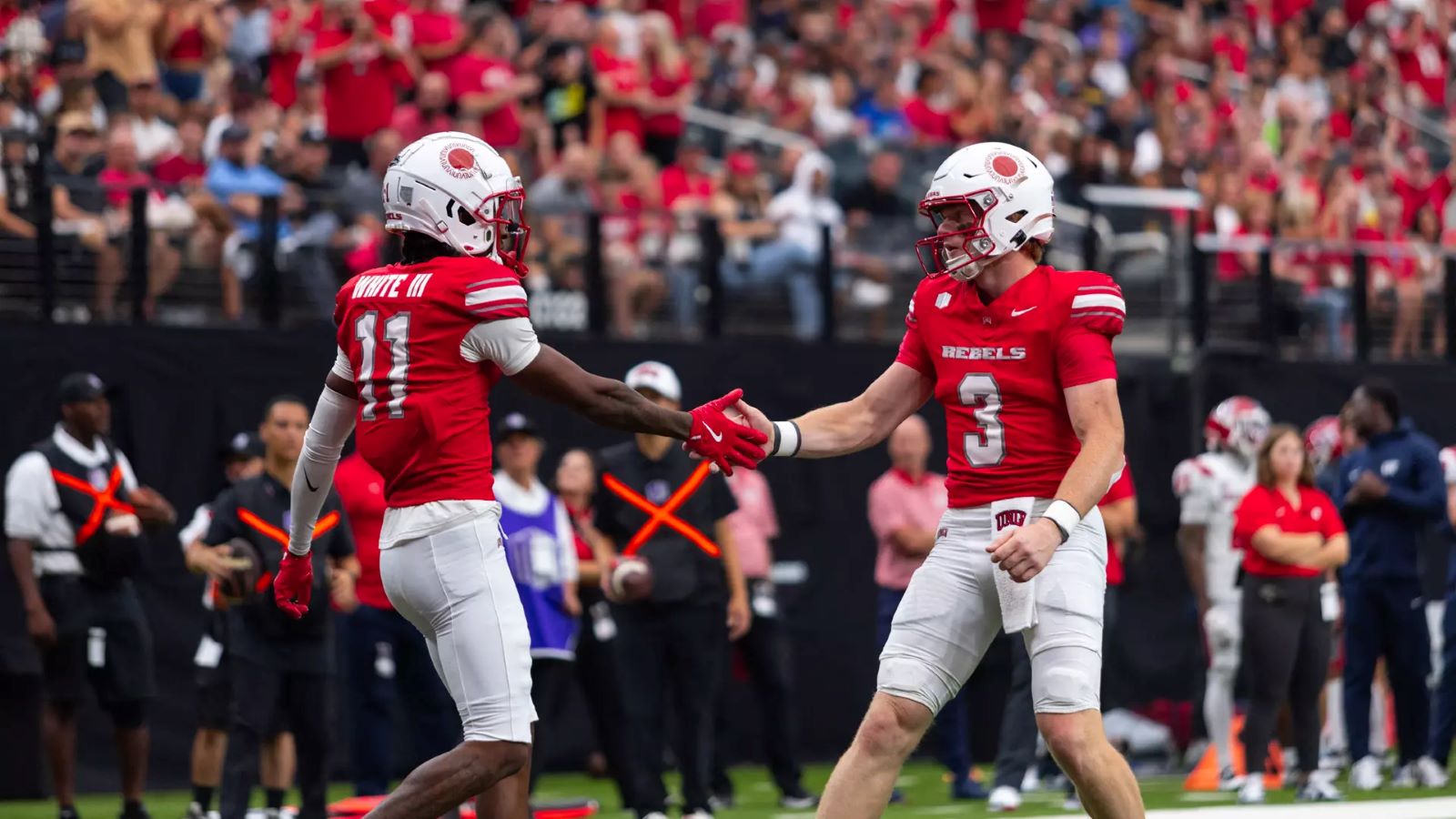A day removed from the Matthew Sluka and UNLV controversy, along with both sides presenting their story, let’s assess the state of NIL. For those who haven’t heard, Sluka claimed that UNLV’s NIL collective promised him $100,000 spread out across several months to enroll at the school but the collective said there was no agreement. UNLV added that it never agreed to provide Sluka compensation for fear of “pay-for-play” concerns. After not receiving any additional payments beyond $3,000, Sluka decided to use his redshirt and will not play the rest of the 2024 season. In short, NIL is not in a great spot and one of the few (maybe only?) solutions is to allow collective bargaining. That’s not going to please some people but we have to face reality: college football at the FBS level is never going back to the way it was.
Having a CBA would also help limit the amount of NCAA influence. After all, the reason college football is in its current state is due to the NCAA’s decades of inaction, and now they’re playing catchup while trying to claim they’re for the “student-athlete”. Spoiler: they aren’t and the NCAA shouldn’t be entrusted to clean up this mess. Having a CBA would also prevent some potential tampering issues by enforcing athletes to remain at a school in order to receive compensation (so not leaving after 3 or 4 games). Under current NIL rules, nothing is preventing NIL Collectives from enticing a player to enroll at their schools but then deciding not to pay them. While schools could attempt to stockpile athletes with limited playing time under a CBA, the player would at least receive compensation for doing very little and it would burn a valuable scholarship slot for the program.
There are plenty of details that would need to be worked out with a CBA but it cannot involve the NCAA unilaterally setting the rules. They’ve already shown they can’t do it correctly for the last 40 years and this issue is too important for them to fumble again. As long as Matthew Sluka’s agent isn’t the one negotiating the CBA on the players’ behalf, players should get a fair shake. As a final reminder to players, families, and agents: be sure to get everything in writing. At least in a CBA, a majority of issues would be clear leaving no room for a gray area or any malfeasance.
Mountain West and Pac-12 Realignment
The ongoing saga of the Mountain West and Pac-12 realignment efforts has reached an apparent detente between the two conferences. The Pac-12 has already poached Boise State, Colorado State, Fresno State, San Diego State, and Utah State from the Mountain West but the MW appears to have stemmed the losses with its 6 full members and Hawaii agreeing to a grant of rights deal that lasts through 2032. The MW had to give large financial concessions to Air Force and UNLV but all 7 members will receive financial rewards for staying. One outstanding issue is that the Pac-12 is suing the Mountain West over the poaching fees, although the financial incentives provided to the 7 remaining MWC members are not tied to the poaching fees.
What has been aggravating to outside observers is that the most logical option was for the two conferences to merge under the Pac-12 banner. One additional step would have been to add Gonzaga as a basketball-only member. That would have given the new conference 14 members in football (Hawaii as a football-only affiliate) and 14 in basketball (with Gonzaga as a basketball-only affiliate). That setup would have presented a strong Western basketball conference that would easily receive multiple bids to the NCAA tournament.
Instead, we have the Pac-12 trying to poach members from the American Athletic Conference, including the horrendous possibility that South Florida could have been a member of the rebuilt conference. South Florida in the Pac-12 would have been a terrible idea because the slight bump in TV revenue, if any, wouldn’t have justified the higher costs. Memphis, South Florida, Tulane, and UTSA ultimately reaffirmed their commitment to the AAC. While California and Stanford have an equally ridiculous travel arrangement, the money they receive in the ACC is still higher than what they would get in a rebuilt Pac-12.
The reality for the Mountain West and Pac-12 is they will have to look at other FBS members in Conference USA, the Sun Belt, or the FCS if they want to add additional members. Both conferences will be competing for the same schools: New Mexico State and UTEP from C-USA, Texas State from the Sun Belt, and the top FCS programs of Montana, Montana State, North Dakota State, and South Dakota State. Sacramento State and Tarleton State are also likely to receive interest as both programs have signaled extreme interest in moving up. Overall, neither the Mountain West nor Pac-12 will be considered a “Power” conference when the realignment dust settles. It remains the Big Ten and SEC in the top spots followed by the ACC and Big 12. It’s a race for “the best of the rest” but the value simply won’t match the top four.
Is college football better with two separate conferences in the West or would it have made sense to have a single conference with 14 teams? The answer is it depends. From a logical perspective, a single conference would be better because the whole would have been better than two separate conferences. On the other hand, having two Western conferences provides some realignment options in the future for any schools interested in moving up (or around). However, future realignment is dependent on how the NCAA is run and that is dependent on how the pending litigation against the NCAA is adjudicated. In other words, there’s never been more uncertainty about how the NCAA will look in the future.
Photo Courtesy of UNLV Athletics
